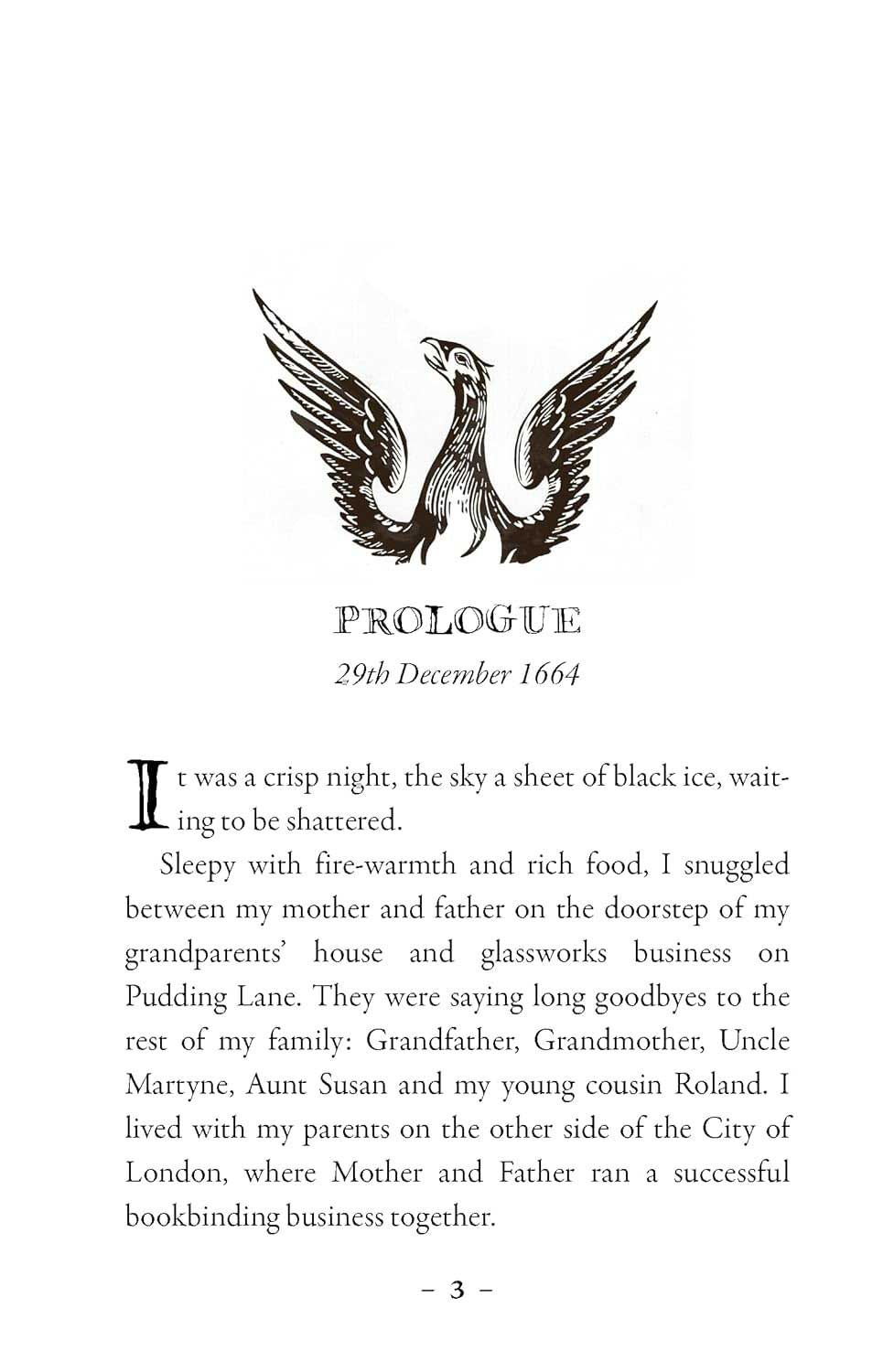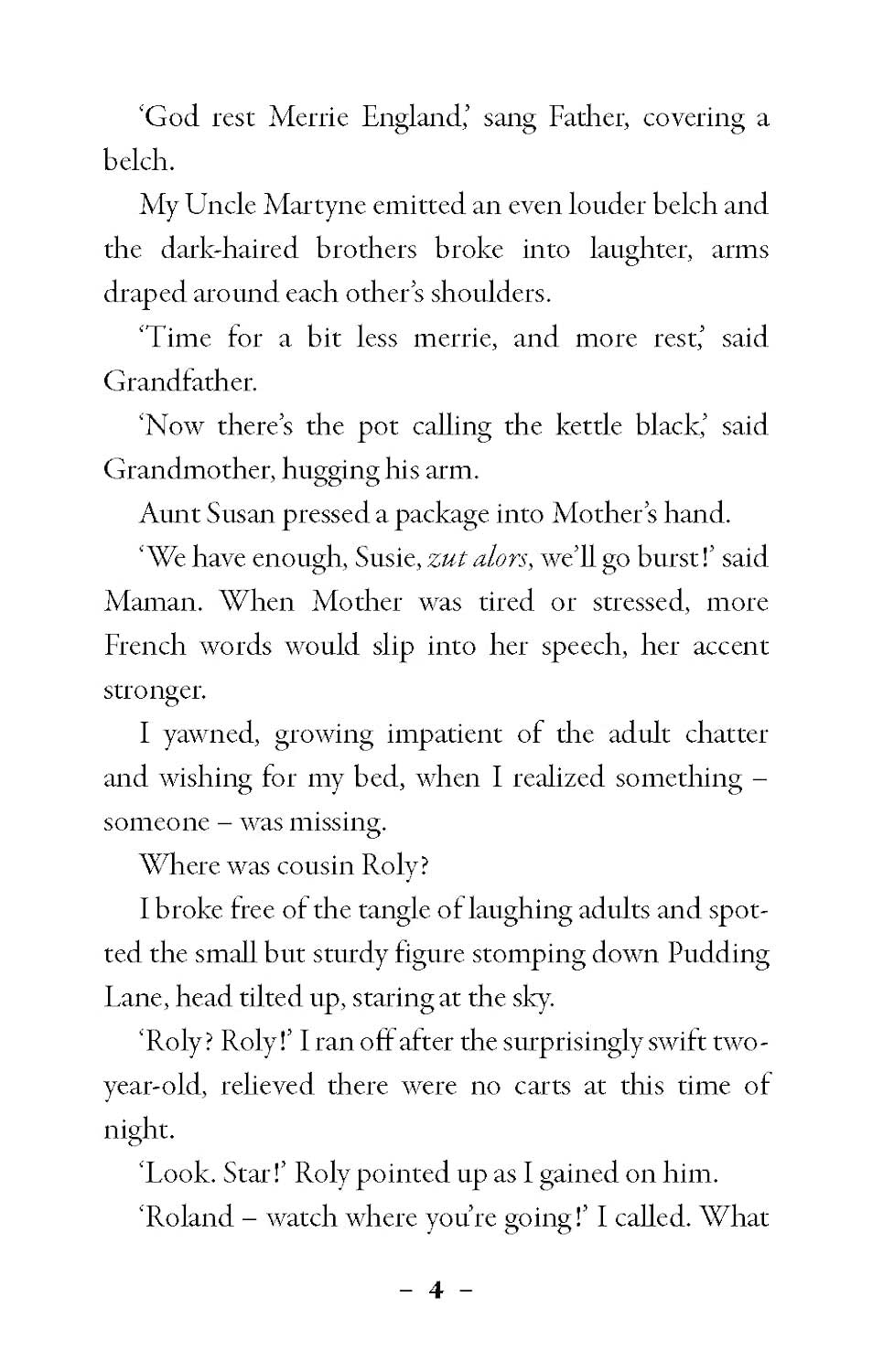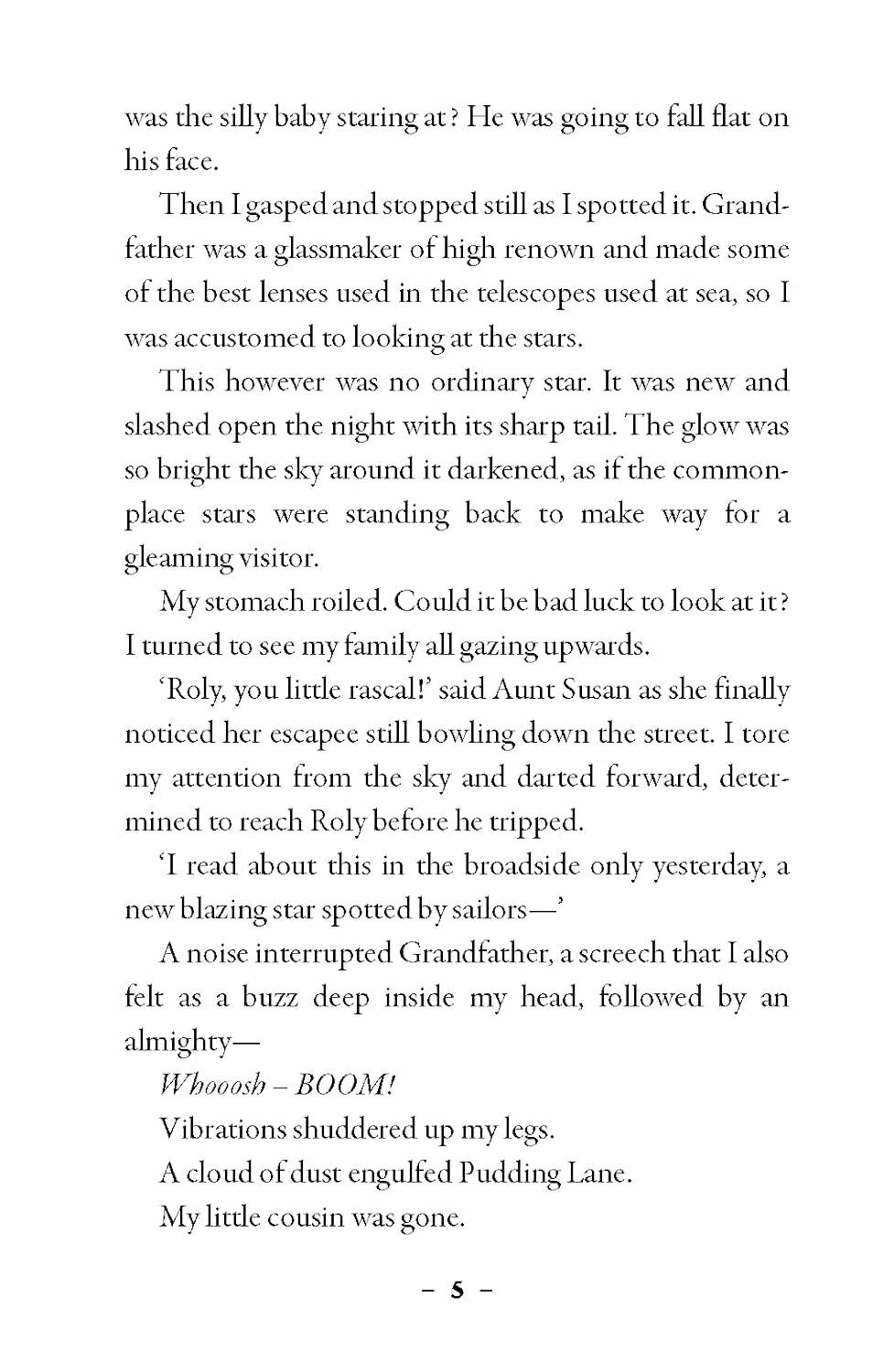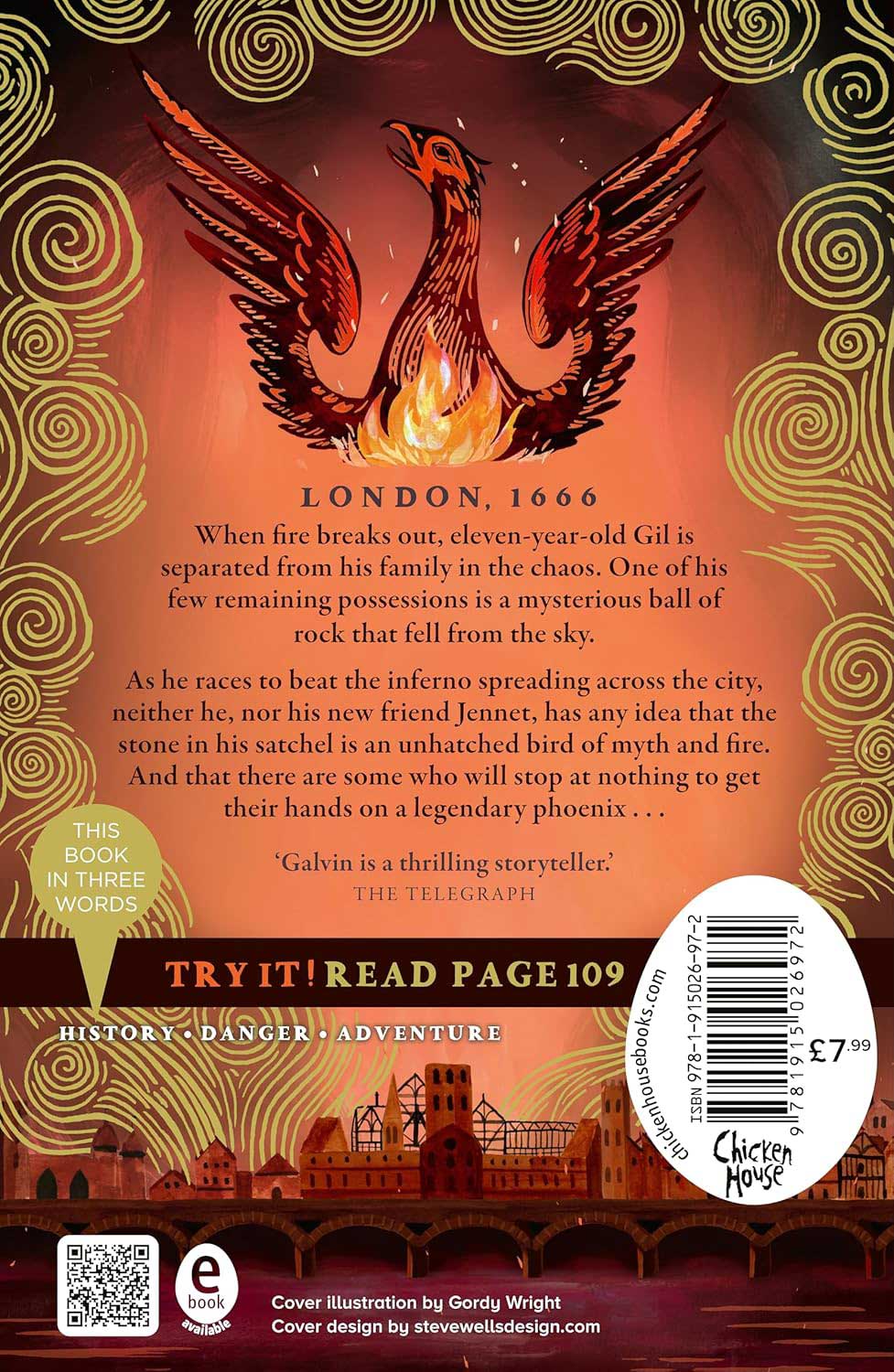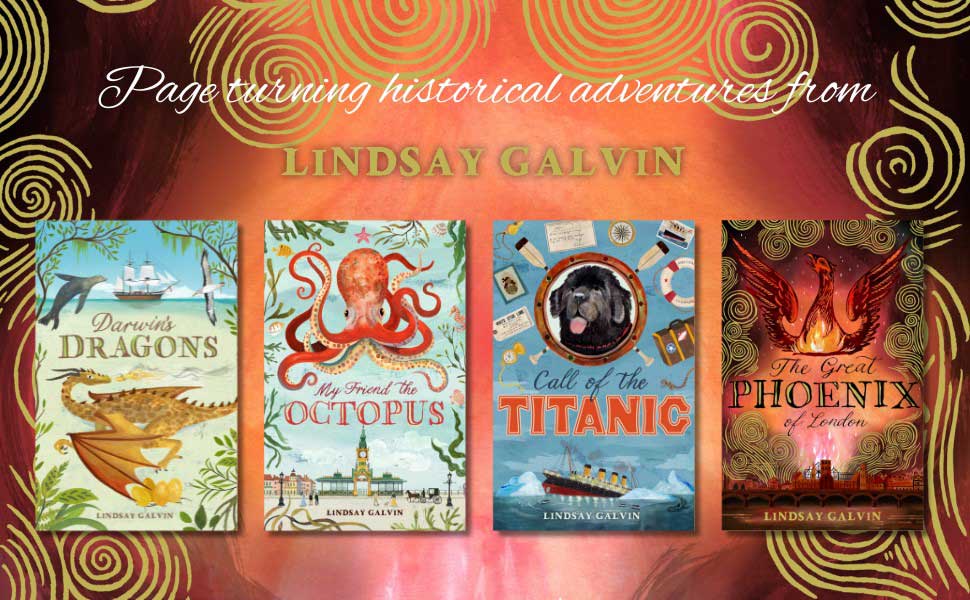The Great Phoenix of London – at a glance
The School Reading Lists’ five word review: Historical, fantasy, friendship, power, trust.
Children’s book title: The Great Phoenix of London.
Children’s author: Lindsay Galvin.
Genre: Children’s fiction.
Published by: Chicken House.
ISBN: 9781915026972.
Recommended for children aged: 9-12 year-olds.
First published: Paperback September 2024.
This children’s book is ideal for: reading alongside the National Curriculum topics of The Great Plague and the Great Fire of London as even though it adds a fantasy element to what happened in 1660s London it is still factually accurate.
To see the latest price or order, click on the book cover image. As an Amazon Associate schoolreadinglist.co.uk earns from qualifying purchases.
Our review:
Gil has had a rough couple of years, first losing his father, uncle, and aunt to the Plague and then watching as his Latin teacher began spending way too much time at his house with his mother! He is always glad of the chance to escape Paternoster Row and the family bookbinding business to visit his grandparents at their glassworks in Pudding Lane.
He is there on the night of Sunday, 2nd September 1666, when the bakery a few doors down catches fire, and his world is suddenly thrown into chaos. Gil’s small cousin, Roly, orphaned by the Plague, won’t leave their home without his heaven stone, which they had all seen fall from a blazing star, or comet’s fiery tail, two years earlier.
With every thoroughfare full of desperate, frightened people, Gil’s grandfather takes them down to the side of the Thames, hoping to get a ride across the river to safety. With room on a friend’s boat for only three, Gil finds himself alone, apart from the boatman’s daughter, Jennet, which he isn’t delighted about! When she saves him from an explosion in the riverbank warehouses, she sets in motion an adventure neither of them could ever have dreamed of.
The heaven stone breaks open, revealing itself to actually be an egg, with a straggly grey being inside, the size of a kitten. As the two children try to get back to the safety of Paternoster Row, the small creature begins to grow every time it comes into contact with anything to do with fire. It is soon so big that it is impossible to hide, and after Gil parts company with Jennet, it becomes clear there are others, more powerful than himself, who are interested in his new pet!
As the danger increases, Gil isn’t sure who he can trust, and after getting caught up in a near riot and its consequences, getting home becomes his only goal. Finally reunited with his mother and Jennet, Gil can begin to relax, but the fire is moving ever closer, and the once kitten-sized creature is now undeniably a large, red Phoenix!
With everyone in the Stationers’ District certain St Paul’s Cathedral won’t burn, Gil and his family make their way to the large stone building, ready to wait out the fire in the crypt. The Phoenix, however, is under attack, coveted by some and reviled by others. It tries to escape, but as Gil finds himself in mortal danger, the legend that swirls around the extraordinary creature could be the only chance of survival he has left.
Our verdict:
Lindsay Galvin has once again woven a legend into a hugely significant historical event and produced an excellent way of grasping and keeping the attention of students aged between 9 and 12.
We are all familiar with the Great Fire of London, its start in Pudding Lane, the speed with which it spread, and the devastation it caused. The facts used here are both well-known and lesser-known, with the parts of the storyline relating to the Phoenix merging seamlessly.
The need to blame someone for the fire sees foreigners persecuted, attacked by vigilantes, or jailed for their own protection, none of which, unfortunately, seems far-fetched almost 400 years later.
The Phoenix, known as Zephyr or Zeph, adds a totally impossible but somehow plausible second layer to this story. Gil speaks French, as it is his mother’s first language, which leads to him being sent off to jail. It’s there that he learns about his bird’s amazing pedigree, as well as realising just how much danger they both are in. As Gil travels across London, sometimes alone and sometimes with Jennet, the historical aspects of this story appear in an exciting, effortless manner, meaning learning happens almost unconsciously as everything links together to explain the magnitude of what began in a small bakery in 1666.
The Great Phoenix of London is split into five parts, one for each day the fire raged, with a map showing its path at the beginning of each section, which I found fascinating. Cross-curricular activities could include drawing out the maps showing the destruction and perhaps overlaying a map of modern-day London so all the landmarks we take for granted could be assessed for the danger they would have been in had they existed in the 1600s.
Teaching points and book club discussion ideas:
- Look at what happens to Gil because he speaks French. He is treated with contempt and blamed for things he couldn’t possibly be guilty of. How does that translate to everyday life now? If something awful happens, are we as quick to apportion blame to anyone not ‘like us’?
- How would the fire and its aftermath have been dealt with had social media been available in the 1600s?
- When Gil and Jennet have to get back to Paternoster Row from the debtors’ prison, he dons the outfit of a medic who treated those suffering from the Plague. During lockdown, at the height of the Covid pandemic, we wore protective clothing and masks. How much do you think things have changed between then and now?
- The Phoenix is a mythical bird said to rise from the ashes. Why do you think the author used this particular legend as the basis of the secondary part of this story?
- Do the maps provide enough information to enable the reader to follow the path of the fire and understand some of the destruction caused? Would you want to build another city in the same way as before, or should things change?
- How did the people who took their belongings to St Paul’s make it far more likely that the safest structure in London would succumb to the flames?
- The author has also written a historical novel about the Titanic. What do the public’s perceptions of that ship and St Paul’s Cathedral have in common?
Many thanks to Chicken House for the review copy.
To order a class set of this book, please click below to order via uk.bookshop.org, an organisation that supports local bookshops, or Amazon.co.uk.
Buy from UK.Bookshop.Org Buy from Amazon.co.uk
Disclosure: If you buy books using the buttons above: we may earn a commission from Bookshop.org, whose fees support independent bookshops; as an Amazon Associate schoolreadinglist.co.uk earns from qualifying purchases.
If you like The Great Phoenix of London by Lindsay Galvin you might also like: our reviews of Darwin’s Dragons by Lindsay Galvin, A Drop of Golden Sun by Kate Saunders, Hide and Seek by Rhian Tracey and Delta and the Lost City by Anna Fargher and Call of the Titanic by Lindsay Galvin.
Browse our Year 6 booklist

